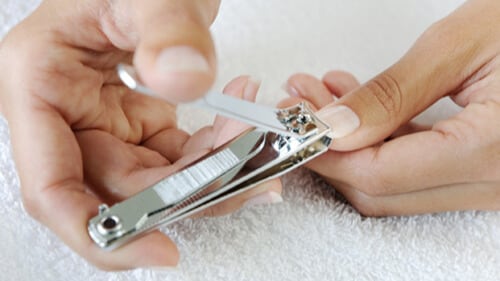Key points
- Dirt and germs can live under your fingernails and cause some infections.
- Keep nails short and clean to prevent nail infections.

Overview
Dirt and germs can live under fingernails and contribute to the spread of some infections, such as pinworms. More dirt and bacteria can gather under long nails than short nails.
Fingernail and toenail infections often appear as swelling of the skin around the nails, pain around the nails, or thickening of the nail. In some cases, these infections may be serious and need to be treated by a physician.
Everyday tips
To help prevent the spread of germs and nail infections:
- Keep nails short and trim them often.
- Scrub the underside of nails with soap and water (or a nail brush) every time you wash your hands.
- Clean nail grooming tools (like nail clippers and files) before use.
- In commercial settings such as nail salons where nail tools are shared among people, sterilize nail grooming tools before use.
- Do not bite or chew nails.
- Do not cut cuticles, as they act as barriers to prevent infection.
- Never rip or bite a hangnail. Instead, clip it with a clean, sanitized nail trimmer.
